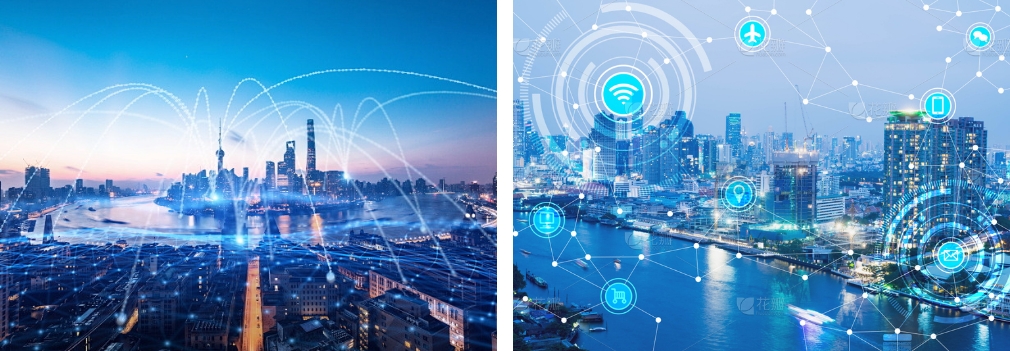Iot applications
The Internet of Things (IoT) originated in the media industry and is the third revolution in the information technology industry. The Internet of Things refers to the connection of any object to a network through information sensing devices and agreed protocols. Objects exchange and communicate information through information dissemination media to achieve intelligent recognition, positioning, tracking, supervision, and other functions.

definition
The most concise definition: The Internet of Things is a network based on information carriers such as the Internet and traditional telecommunications networks, which enables all ordinary physical objects that can be addressed independently to achieve interconnection. It has three important features: ordinary object device, autonomous terminal interconnection, and ubiquitous service intelligence.
Concept of Internet of Things
Other definitions: The Internet of Things refers to the "intelligent objects or animals" or "intelligent dust" (Mote) of Ubiquitous end devices and facilities, including sensors with "internal intelligence", mobile terminals, industrial systems, building control systems, home intelligent facilities, video monitoring systems, etc., and "external enabled", such as various assets affixed with RFID, individuals and vehicles carrying wireless terminals, etc., through a variety of wireless and/or wired long-distance and/or short distance communication networks to connect Internet of Things domain names to achieve interconnection (M2M), applications Grand Integration, SaaS operation based on cloud computing, etc, By adopting appropriate information security mechanisms, we provide real-time online monitoring, positioning and tracing, alarm linkage, scheduling and command, contingency plan management, remote control, security prevention, remote maintenance, online upgrades, statistical reports, decision support, leadership desktop (centralized Cockpit Dashboard) and other management and service functions that are safe, controllable, and personalized, achieving the integration of "management, control, and operation" of "efficient, energy-saving, safe, and environmentally friendly" for "all things".
Understanding the Internet of Things with a Sentence Structure
All items are connected to the Internet through information sensing equipment for information exchange, that is, things interact with each other to achieve intelligent identification and management.
The industrial practice of the Internet of Things worldwide mainly focuses on three major directions.
What is the Internet of Things in the sense of "ubiquitous aggregation" of data?
The first practical direction is called "Smart Dust", advocating the interconnection and intercommunication of various sensor devices to form an intelligent functional network.
The second practical direction is the well-known logistics network based on RFID technology, which advocates strengthening the management of logistics and logistics information through the identification of items and objects, and forming intelligent information mining through information integration.
The third practical direction is called the Internet of Things in the sense of "ubiquitous aggregation" of data. It is believed that the Internet has created a huge ocean of data. It is necessary to fully realize the resource of data by accurately identifying the attributes of each of the data. This is not only the inevitable requirement for the in-depth development of the Internet, but also the mission of the Internet of Things.
Comparatively speaking, the Internet of Things in the sense of "smart dust" belongs to the generalization of industrial buses. This kind of industrial practice has never stopped in industrial production since mechatronics integration and industrial informatization, but it was called industrial bus instead of IoT at that time. In this sense, the Internet of Things will steadily advance based on the development of sensing technology and various local area network communication technologies, in accordance with its inherent scientific and technological laws, and will not accelerate its development speed due to human activities.
The EPCglobal standard, which is based on the RFID concept of the Internet of Things, was defined as the core standard for the future Internet of Things when it was introduced. However, the inherent limitations of this standard and its only method, RFID electronic tags, make it difficult to truly point to the smart star advocated by the Internet of Things. The reason is that the information that can be conveyed by the connections between objects is very limited, and the connections between the states of objects are the only way for people to truly explore the various connections that commonly exist between things, thereby obtaining new cognition and wisdom.
"Ubiquitous aggregation" means to realize the omnipresent vast data ocean created by the Internet, and to realize the aggregation in the sense of mutual understanding. These data represent both objects and their states, and even various manually defined concepts. The ubiquitous aggregation of data will enable people to easily retrieve various types of data they need. With the help of various mathematical analysis models, they can continuously explore the complex connections between the transactions represented by these data, thus achieving a revolutionary leap in human cognitive ability towards the surrounding world.
Technical Architecture
The architecture of the Internet of Things can be divided into three layers: perception layer, network layer, and application layer.
The perception layer is composed of various sensors, including temperature and humidity sensors, QR code tags, RFID tags and readers, cameras, infrared, GPS and other perception terminals. The perception layer is the source of identifying objects and collecting information in the Internet of Things.
The network layer consists of various networks, including the Internet, radio and television networks, network management systems and cloud computing platforms. It is the backbone of the entire Internet of Things and is responsible for transmitting and processing the information obtained by the perception layer.
The application layer is the interface between the Internet of Things and users, which combines with industry requirements to achieve intelligent applications of the Internet of Things. Its core technology can be further divided into six layers



 EN
EN